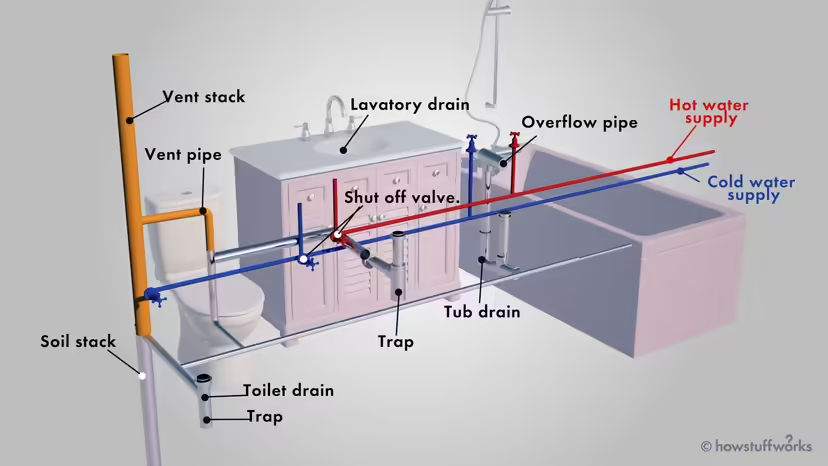How a Kitchen Plumbing Works
Plumbing systems are a necessary part of our lives. We depend on them to provide us with clean drinking water through our taps, warm showers from our showers, and flushing toilets that are always at the ready. So when something goes wrong with your plumbing system, you want it fixed as soon as possible. However, sometimes the fix can be more complicated than you may think. This blog will teach you about how your kitchen sink plumbing system works, how to fix common problems in your kitchen sink, and some helpful tips for maintaining a healthy and functional kitchen sink.

What is your kitchen sink?
Your kitchen sink is a plumbing fixture with multiple functions. Your kitchen sink has pipes that carry water, waste, and hot and cold water. Your kitchen sink also has drains that carry the water to your septic system and a pipe to carry water outside your house. You can attach a garbage disposal at the bottom of your kitchen sink if you want to.
How a kitchen sink works
A sink has several types of plumbing that need to be in order for the system to function properly. The drain is the main component of a kitchen sink. It is responsible for carrying away any water that enters your sink. The waste pipe is where food particles, grease and other disgusting things go into the drain. The cold water pipe is what brings cold water into your kitchen sink. This pipe begins at the bottom of your faucet and runs into the bottom of your kitchen sink. From there, it continues out through a hole in the side of your sink and up to another faucet (usually on top). Finally, there are two pipes that lead from this point up to the wall: one contains hot water, which comes from the hot water tank located on or near the roof; and one contains chilled water, which comes from an air conditioning unit outside or near the roof.
When you turn on your faucet, cold water first flows through both pipes before it reaches your faucet spout. Hot water then flows into both pipes before it reaches you as well. This allows you to have both hot and cold running off of just one spout in one hand-free unit.
When something goes wrong with your kitchen sink
The most common problem for your kitchen sink is that it’s leaking. The kitchen sink may leak from the main drain, the garbage disposal, or even the water supply line. Another issue that can arise with your kitchen sink is that it won’t drain properly. The two most common issues are clogged drains and a broken water supply line.
Common problems with your kitchen sink
Clogs: A clog is the result of a buildup of gunk or debris that prevents water from flowing freely. This means your sink will overflow when you do not have enough water pressure for it to flow. If this situation arises, you should use a plunger to remove the clog and then make sure the sink is clean before starting your plumbing system again.
Washing Machine Leaks: If your washing machine leaks while it is running, there are two causes of this issue. The first reason is that the pipe leading from the clothes washer may be loose or disconnected. The second reason is that there may be a problem with your washing machine itself. In both cases, you should shut off the washer and use a wrench to tighten up any loose connections in pipes or your washing machine itself until the leak stops occurring.
The Kitchen Sink Plumbing System: How It Works and How to Fix It
Tips for maintaining a healthy and functional kitchen sink
The number one tip for maintaining a healthy and functional kitchen sink is to keep your sink, tub, and shower clean. This will help prevent issues such as mold and mildew from growing. You can also use vinegar in the water to help eliminate any unwanted bacteria.
Another tip for maintaining a healthy and functional kitchen sink is using a stopper on the drain when you are done using your sink or bathtub. This will not only make sure that your tub doesn’t overflow when it starts filling up with water, but it’s also beneficial because it prevents any potential sewer gases from entering the house through the drain. If you don’t have a stopper on your drain, then it’s recommended that you install one immediately so that you can avoid having these problems in the future.